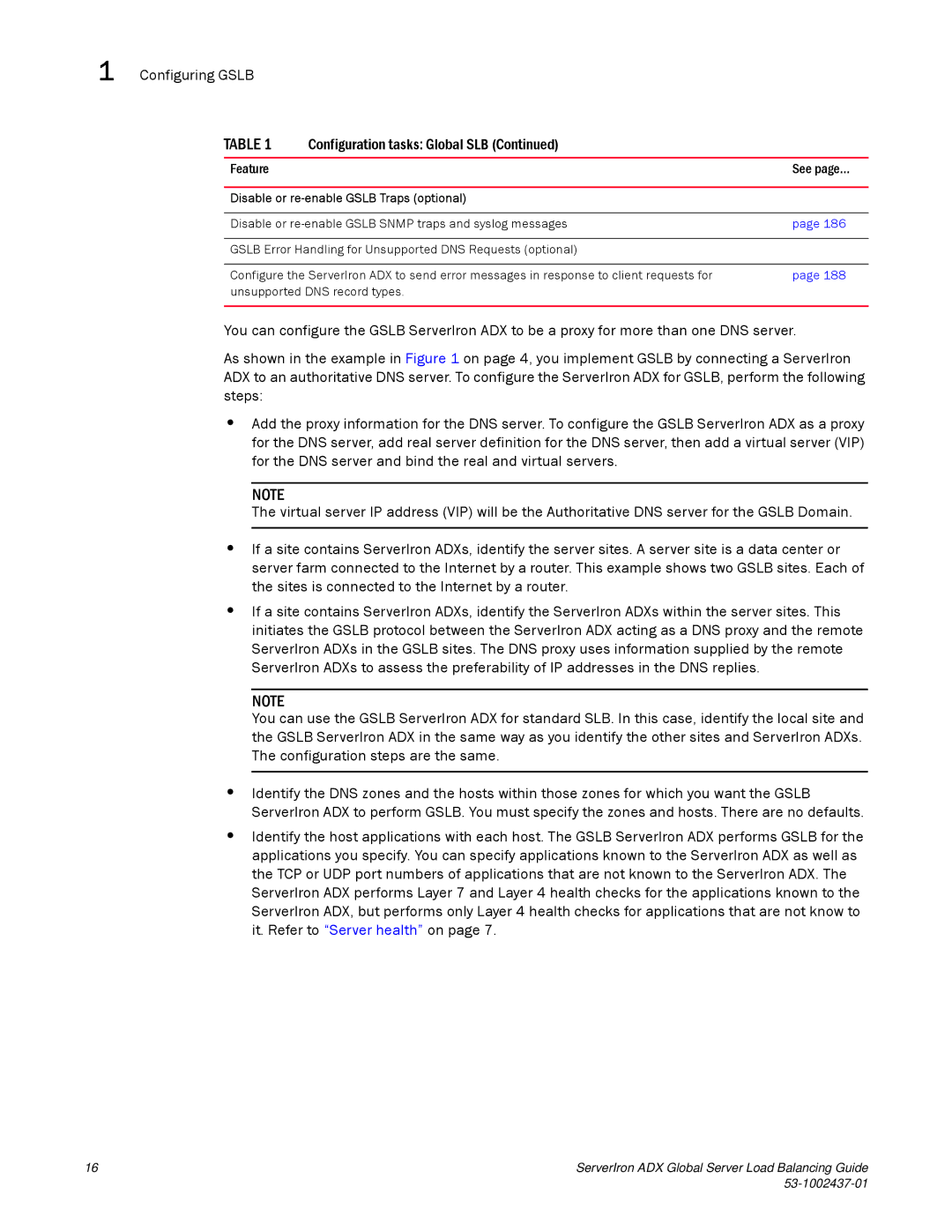
1 Configuring GSLB
Configuration tasks: Global SLB (Continued)
•Add the proxy information for the DNS server. To configure the GSLB ServerIron ADX as a proxy for the DNS server, add real server definition for the DNS server, then add a virtual server (VIP) for the DNS server and bind the real and virtual servers.
NOTE
The virtual server IP address (VIP) will be the Authoritative DNS server for the GSLB Domain.
•If a site contains ServerIron ADXs, identify the server sites. A server site is a data center or server farm connected to the Internet by a router. This example shows two GSLB sites. Each of the sites is connected to the Internet by a router.
•If a site contains ServerIron ADXs, identify the ServerIron ADXs within the server sites. This initiates the GSLB protocol between the ServerIron ADX acting as a DNS proxy and the remote ServerIron ADXs in the GSLB sites. The DNS proxy uses information supplied by the remote ServerIron ADXs to assess the preferability of IP addresses in the DNS replies.
NOTE
You can use the GSLB ServerIron ADX for standard SLB. In this case, identify the local site and the GSLB ServerIron ADX in the same way as you identify the other sites and ServerIron ADXs. The configuration steps are the same.
•Identify the DNS zones and the hosts within those zones for which you want the GSLB ServerIron ADX to perform GSLB. You must specify the zones and hosts. There are no defaults.
•Identify the host applications with each host. The GSLB ServerIron ADX performs GSLB for the applications you specify. You can specify applications known to the ServerIron ADX as well as the TCP or UDP port numbers of applications that are not known to the ServerIron ADX. The ServerIron ADX performs Layer 7 and Layer 4 health checks for the applications known to the ServerIron ADX, but performs only Layer 4 health checks for applications that are not know to it. Refer to “Server health” on page 7.
16
